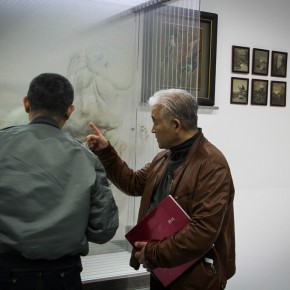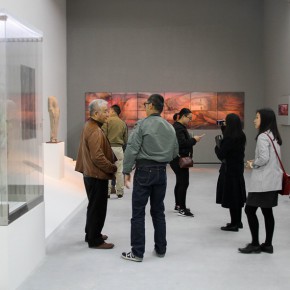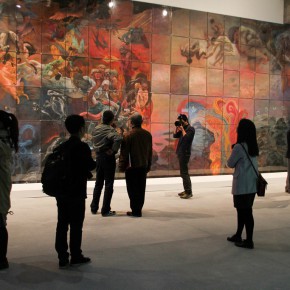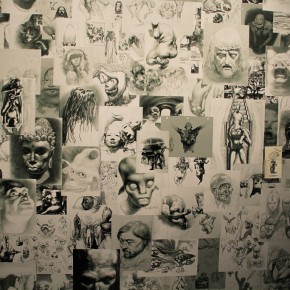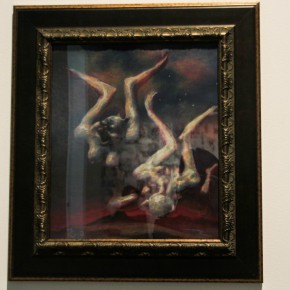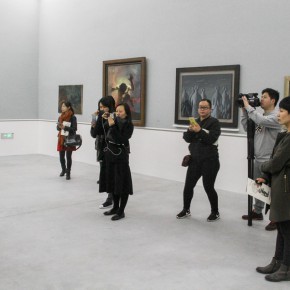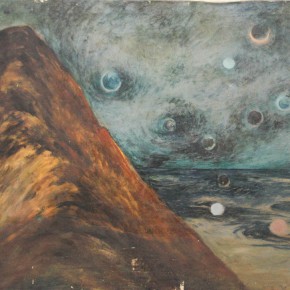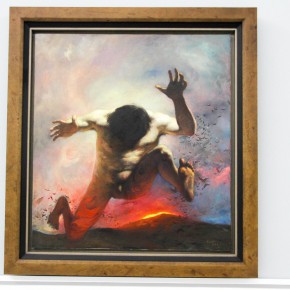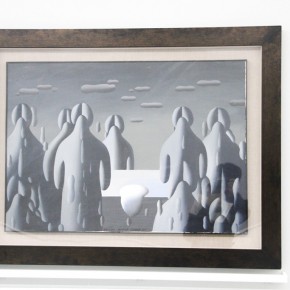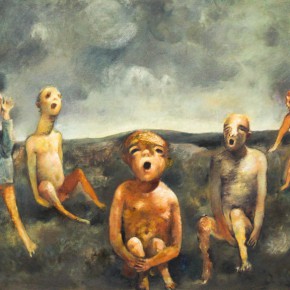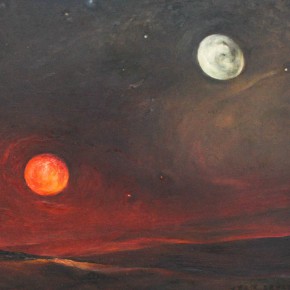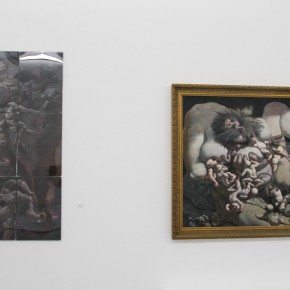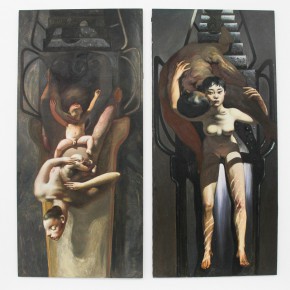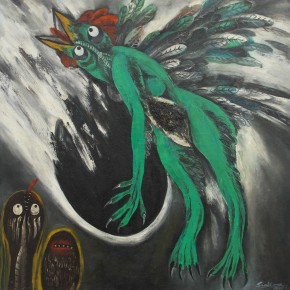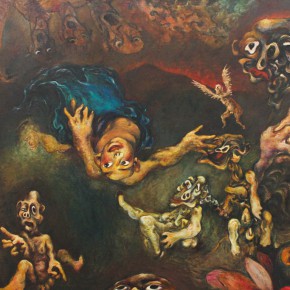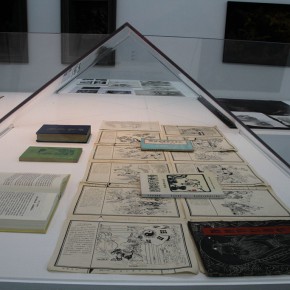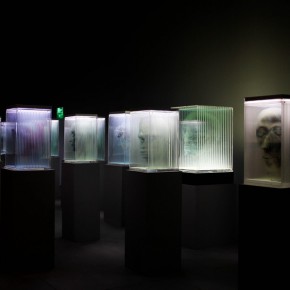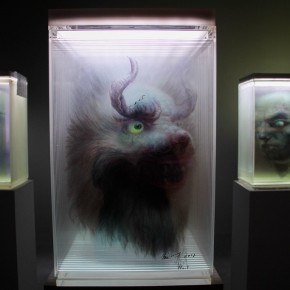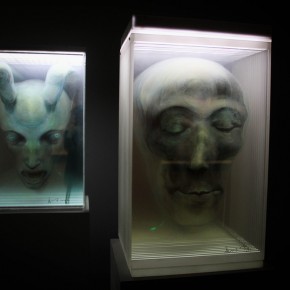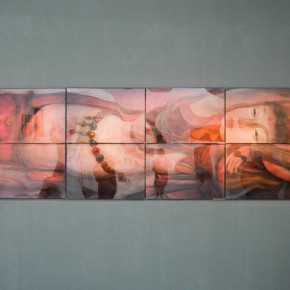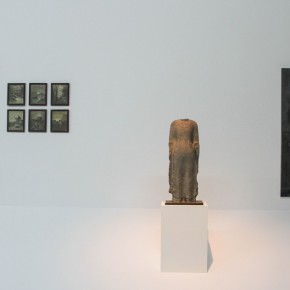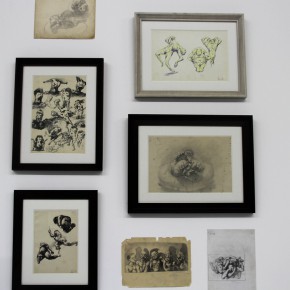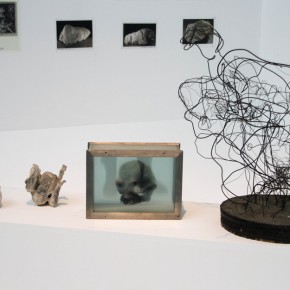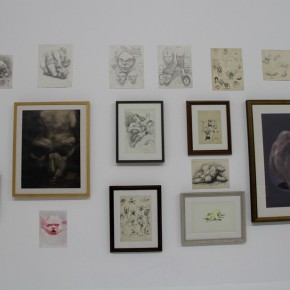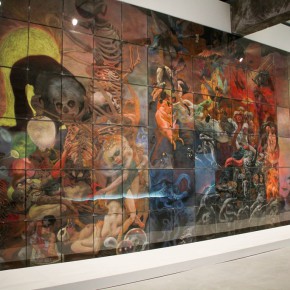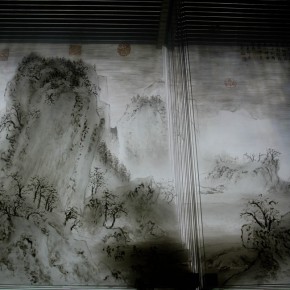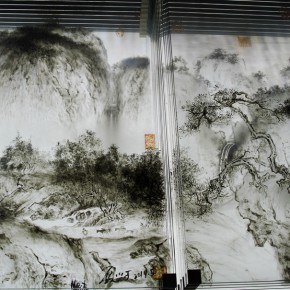
On October 31, hosted by Beijing Minsheng Art Museum and co-organized by Tang Contemporary Art, “Rotation” Xia Xiaowan’s solo exhibition opened at Beijing Minsheng Art Museum. Cui Cancan is the curator of the exhibition, the exhibition is divided into four parts including “Beginning in the Wilderness”, “Man and Spirit: Conscious Individual”, “Portrait of the Other”, and “Freedom’s Transformation and Return”, striving through research of the works in different stages by Xia Xiaowan over the past 30 years, to completely present the rich contexts of the individual artistic creations for the first time, and the related Chinese contemporary art history.
He graduated from the 3rd Studio of the Department of Oil Painting, CAFA in 1982, Xia Xiaowan is currently a teacher of the Department of Stage Art at the Central Drama Academy in Peking, since “The New Wave Art” period in the 1980s, he has been active in the creative stage of contemporary art, and constantly breaks through the language boundary between himself and painting ontology, his artwork is romantic and of an individual soul, the made-up “spatial painting” has a 3D visual presentation, overturning the inherent two-dimensional and three-dimensional ways of seeing. Xia Xiaowan is described by the curator Cui Cancan, so that he is one of the artists who are accepted by the two systems when contemporary art rivals the academy art, he has participated in most of the contemporary arts in China over the last 30 years, although he has been “presenting”, he has never been classified.
An expansive body of work is presented at the exhibition which has spanned more than 30 years of Xia Xiaowan’s artistic career, covering a diverse array of themes and categories. From his broad view of personal experience, heavenly myths, and Eastern and Western history, he has made multimedia experiments in oil painting, drawing, pastels, sculpture, and painting installation.
The exhibition has been divided into four parts, which echo one another: “Beginning in the Wilderness”, “Man and Spirit: Conscious Individual”, “Portrait of the Other”, and “Freedom’s Transformation and Return”, based on the changing times, we can divide Xia Xiaowan’s works into different periods. When placed against the multi-faceted background of Chinese contemporary art and combined with related works by other artists, historical artifacts, videos, and books, we can use his work to make specific comparisons. They represent the agreeable or conflicting relationships between the artist and the mainstream and reflect the uniqueness and complexity of Xia’s personal journey. The works by Wang Guangyi, Shi Benming, Ding Fang and so on are shown at the same time, as a comparison, by which the viewer can think about the individual value of Xia Xiaowan and the established way of the individual style. It is worth mentioning that the 4th part “Freedom’s Transformation and Return” showcases the work “Legend”, created in 2014 and 2015, which is the largest painting ever by the artist. It is about 13 meters long and 5 meters high, composed of 132 works in pastel, divided into 4 stages of creation. It is too large so it is rarely seen in the historical analysis of Chinese contemporary art.
Beginning in the Wilderness
Xia Xiaowan created the “Wilderness” series in the mid-1980s, and it seems to be a group portrait of the times, in the dusky wilderness, there is a slightly isolated silhouettes within a group of artistic idealists and revolutionaries. In this period, Xia’s work presents a very heroic yet tragic atmosphere. The forms are abstract and cold, and full of the romantic feelings of human concerns, while the signs of living hope are particularly obvious. The universal predicament of the value and meaning of existence gives these pieces a typical style and form of the 1980s.
Man and Spirit: Conscious Individual
“Man and Spirit” represents Xia Xiaowan’s personal awakening. From 1986 to the late 1990s, Xia entered into a peak period in his oil painting work. He continually renewed his painting language, returning to the molding of consciousness and the exploration of narrative structure. He gave classic images from history a new form. His work became freer, and his modeling became absurd and unruly. His narratives were powerful and the romantic nature of his imagination and organization became clearer. During this period, Xia distanced himself from mainstream realities, and he gradually established fresh systems of language and modes of knowledge.
Portrait of the Other
Xia Xiaowan began “Portrait of the Other” in 2003, and he bid his golden age of oil painting goodbye. In attempting to transform space and perspective, form and quality, he used a series of glass plates to create spatial paintings that represent actual visual perception. In Xia’s work, the portrait of the Other exists in two dimensions; these portraits are the Others of the real world, and they symbolize another free dimension apart from the ordinary world. They engage with Xia’s situation as an Other outside the mainstream, one that transcends history and personal experience.
Freedom’s Transformation and Return
The pursuit of the possibilities of freedom have permeated Xia Xiaowan’s work since the 1980s. The sketches and pastel pieces have become an effective way for us to look back on this journey. At many moments in these explorations, free forms and boundless fantasies are prominently jointed together. Xia turns in circles, with no center and no edges. These sketches are the essence of Xia’s different periods and series, and the source of his artistic ideas. They explain the various pasts that Xia has experienced. He finds unity in the continuous changes to the relationship between illusion and reality, seeking an individual path toward a free experience of the world.
Text by Zhang Wenzhi and Cui Cancan, translated by Chen Peihua and edited by Sue/CAFA ART INFO
Photo by Zhang Wenzhi and Beijing Minsheng Art Museum
About the exhibition
Artist: Xia Xiaowan
Curator: Cui Cancan
Opening: October 31, 2015 (Saturday) 16:00
Duration: October 31 - November 27, 2015
Venue: Beijing Minsheng Art Museum F2 gallery


